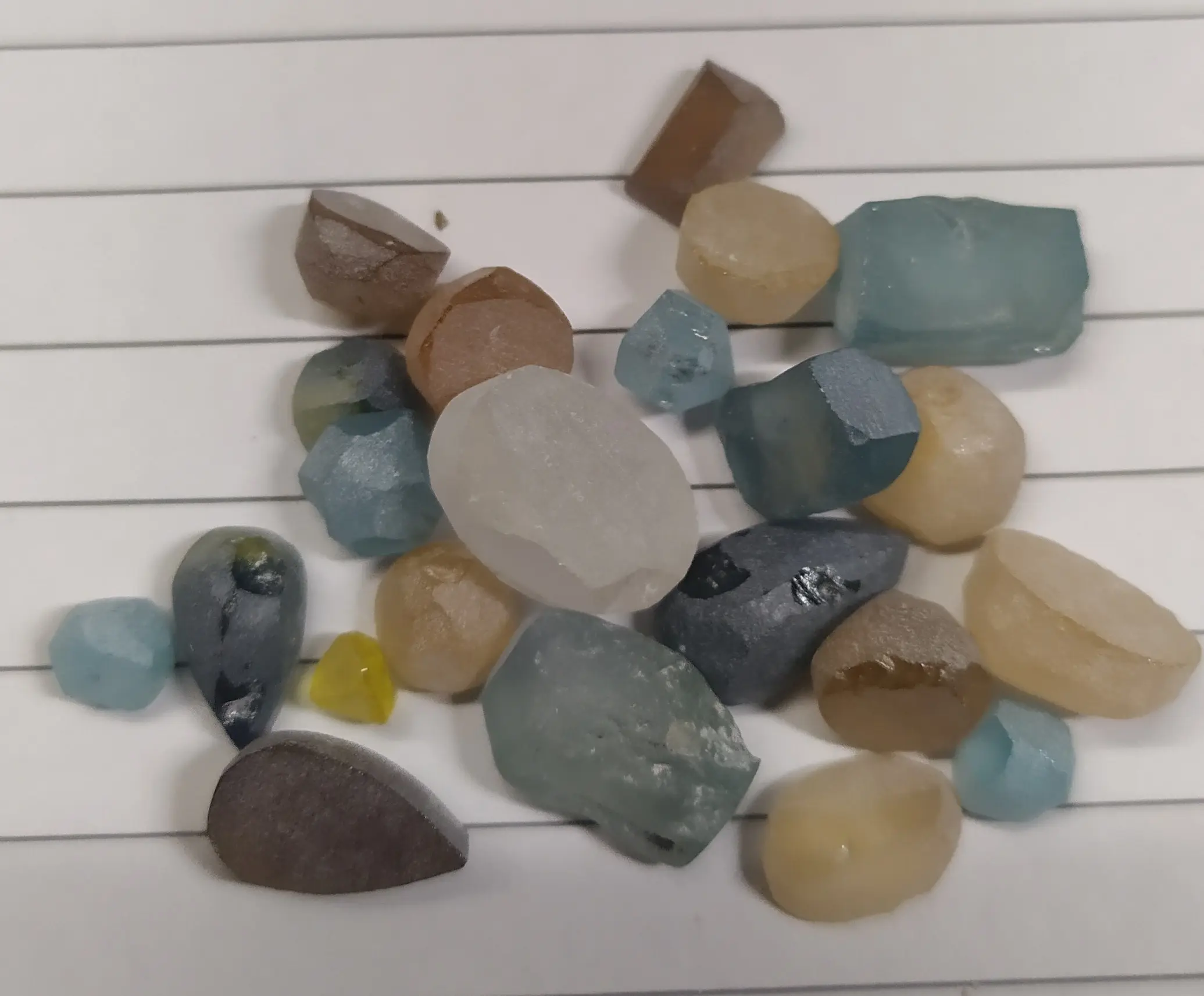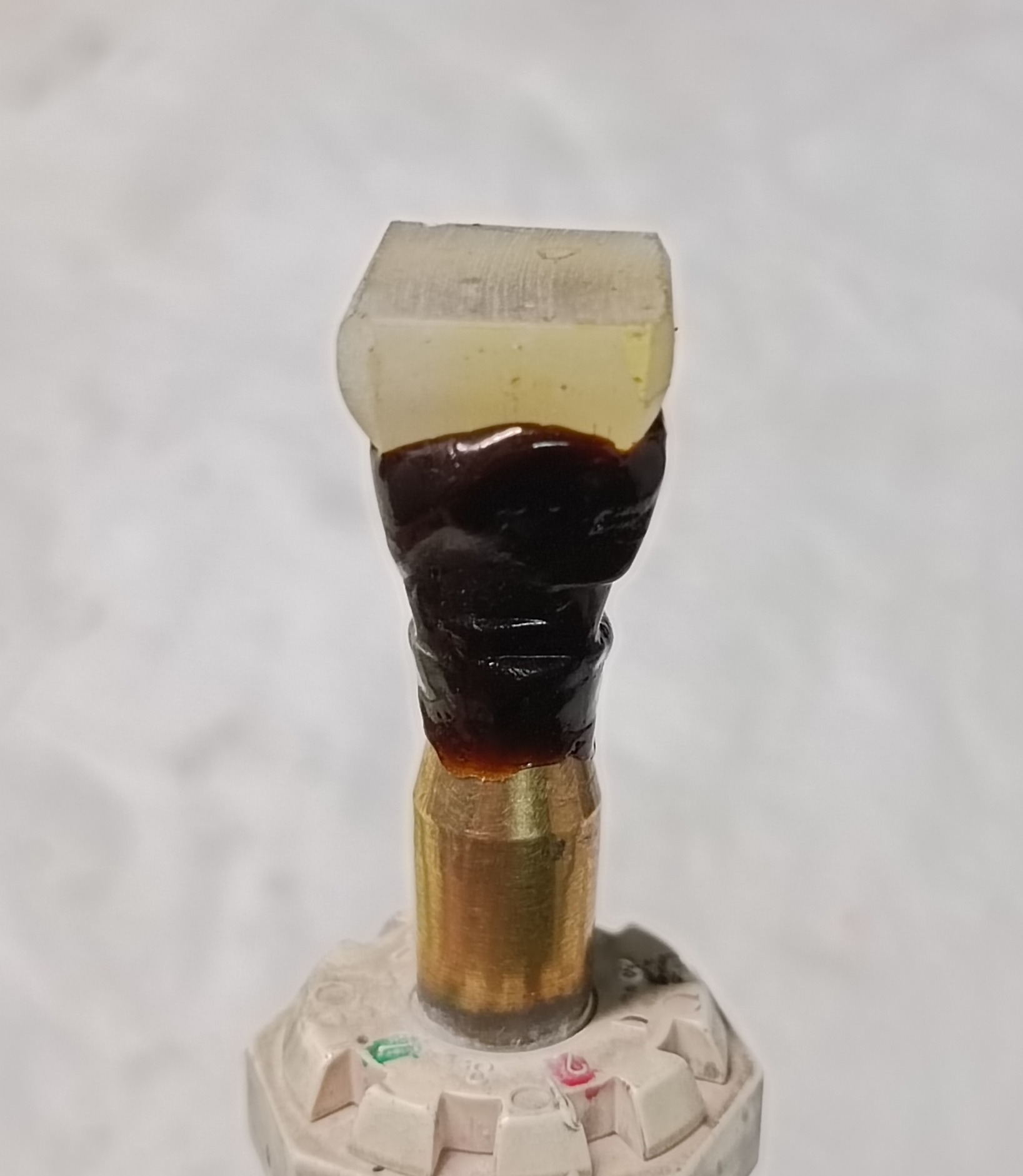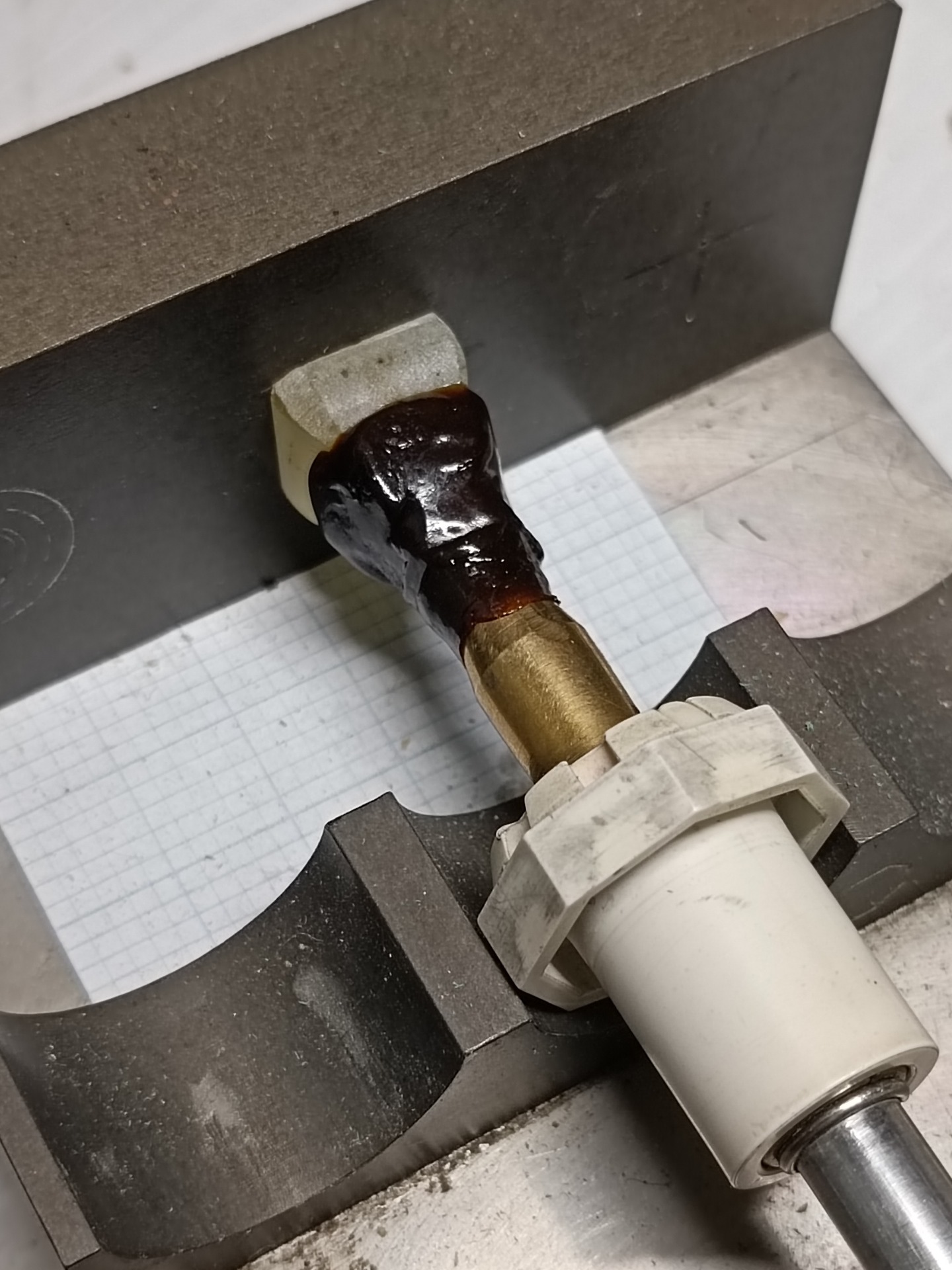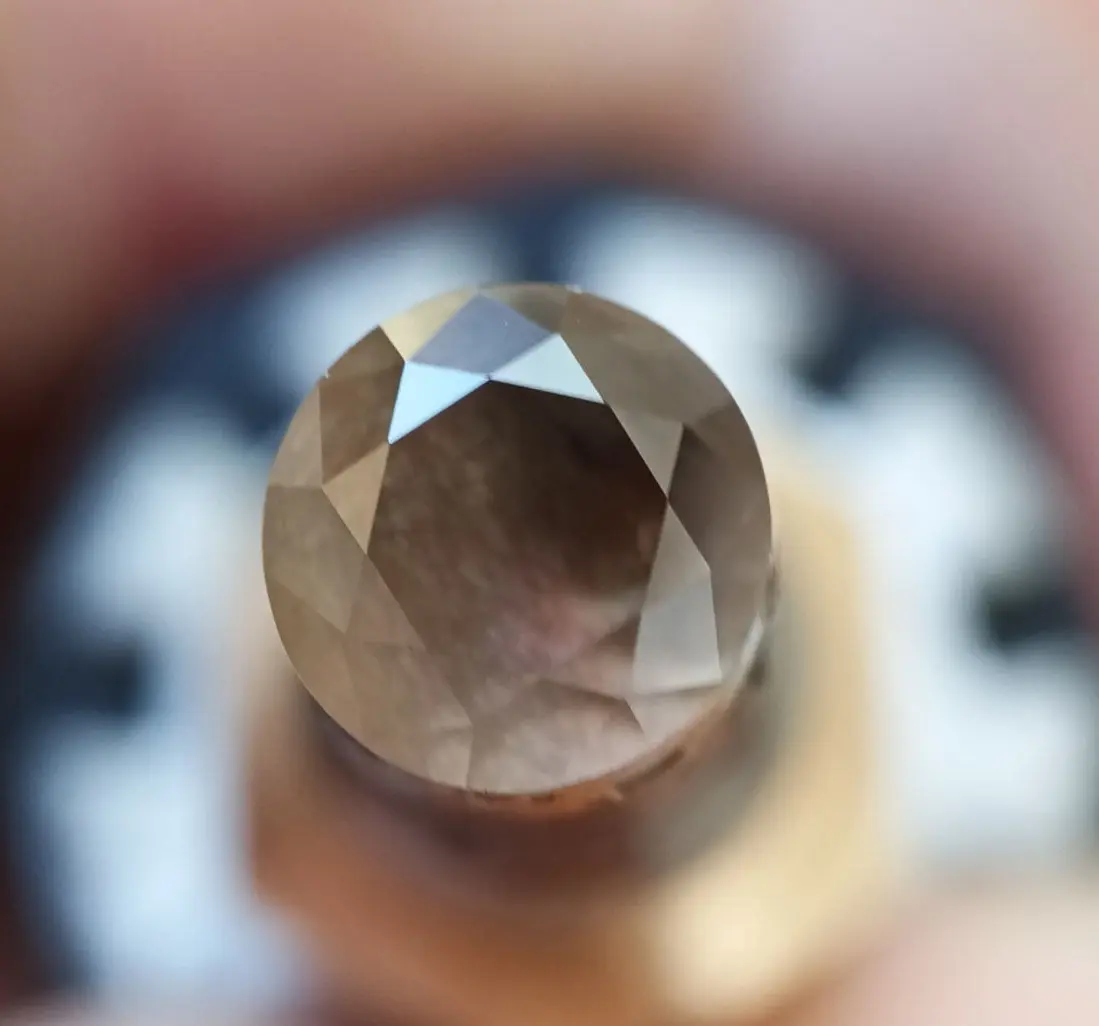Pre-forming and Dopping

Pre-form your rough before dopping, with the jamb peg you are cutting to make best use of your rough and not cutting to a set ratio as in a diagram.

These dopsticks are pointed, no flats or V's to aid in dopping. Originally they would of been used with UV setting adhesive, the pavilion will be dopped as the crown is cut first.
One size fits all.

The stone is dopped allowing around 1/3 of the depth for the crown. Emerald and square cuts can be done on the machine. Oval, pear's etc. are pre-formed by eye. You will need an alternative method to pre-form rounds.

The table of the pre-formed stone is pressed against a flat plate to align it on the dopstick. Check the stone is centered, if not just warm it up and move the stone. It doesn't have to be 100% perfect.
